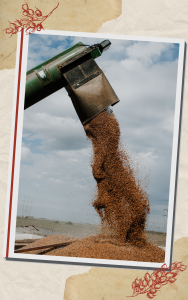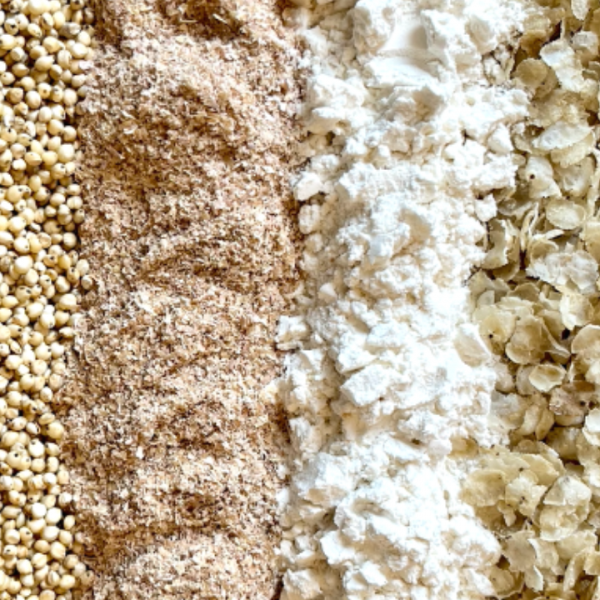
Cultivating Growth: US Sorghum’s Trade Mission to China
Written by USCP Board Member, Kim Baldwin
In April 2023, I was privileged to represent U.S. sorghum producers as a member of the first U.S. Grains Council Trade Mission Team to return to China since 2019. Four individuals representing different parts of the sorghum industry throughout the Sorghum Belt, as well as three U.S. Grains Council staffers traveled throughout South China including stops in Shanghai, Xiamen, Shenzhen and Guangzhou during this trade mission.
This mission was sorghum-specific and had multiple objectives which included:

Meeting with Jiangnan University for updates on the current U.S. sorghum in baiju study

Conducting one-on-one customer visits with essential sorghum buyers

showcasing the 2022/23 U.S. Sorghum Crop Quality Report

Learning about demand consumptions trends in China’s market

further developing and strengthening the relationships between U.S. suppliers and Chinese grain buyers that will result in more sales to china


Chinese buyers have kept their interest in U.S. coarse grains and co-products. Moreover, these buyers have worked to maintain partnerships with U.S. suppliers for future business.
China ended its “Zero-Covid Policy” in December 2022, and the market has gradually returned to business as usual.
Our team began in Shanghai where we met with a researcher from Jiangnan University who is currently studying the properties of U.S. sorghum for Chinese liquor production.
This Chinese liquor, known as baijiu, is a colorless, traditional spirit that is widely consumed in China. By some estimates, baijiu accounts for nearly 70% of the total alcoholic beverages available in China. While traveling through South China on this trade mission, the marketing of various baijiu brands dominated billboards, display case and any surface one might or might not expect to find an advertisement–including pillars at airports and display screens at luggage carousels.

Baijiu is produced using a unique fermentation process. While other grains including wheat, corn, rice and sticky rice can be used as raw materials in the making of baijiu, sorghum accounts for roughly 50% of the grain used in the production of this distilled spirit.
Researchers at Jiangnan University have been testing U.S. sorghum samples to identify the preferred varieties of sorghum from different sorghum-producing areas within the United States for baijiu production. While the research is based on a number of factors that identify the preferred varieties and location from which the varieties originate, one key area of focus is identifying the type of sorghum and its location that impacts baijiu’s aroma profiles and flavor compounds. The study will see its final three fermentation batches at the end of February 2024 and the final report is expected by mid-2024.
Baijiu is a spirit that is consumed primarily in social settings, and since China’s “Zero-Covid Policy” ended in December 2022, one expects to see increased consumption due to increased social gatherings. This is a market for U.S. sorghum producers to keep aware of.
South China is an impressive trading hub that is important for U.S. agriculture. Nearly 40% of the world’s leather footwear is produced within this region. More than 60% of the world’s denim production is also located in South China. Moreover, South China leads its country in swine, broiler (chicken and duck), and aqua feed production. Most impressive is that of all U.S. sorghum exported to China annually, approximately 74% of that sorghum enters through South China.
While traveling throughout South China, our trade mission team met with nine companies during one-on-one visits. During these visits, we highlighted findings from the 2022/2023 U.S. Grains Council Sorghum Quality Report which provides unbiased information about the quality of the U.S. sorghum crop. The report identified the results from 97 samples taken from outbound shipments from 15 country elevators and one large sorghum producer. The samples were analyzed for grade factors established by the USDA, chemical compositions, and other quality characteristics not reported elsewhere.
The report ultimately showed U.S. sorghum was, on average, graded above the necessary requirements for U.S. No. 1 certification. It also showed an absence of tannins and a protein content that averaged 11%. Moreover, the report showed that broken kernel and foreign material were lower than last year’s study results suggesting the ability of U.S. sorghum to withstand handling and storage threats.

As our team discussed these results with many of the buyers, it was clear that the quality report was not a surprise to many of them. Multiple times during our conversations, buyers would note that U.S. sorghum is preferred over competing countries because the U.S. sorghum “quality is stable.”
The groups we visited consisted of suppliers/distributors for China’s animal feed manufacturers, animal feeders, and suppliers for liquor industries, as well as those directly involved in animal feed (livestock and pet food) production and aquatic products.
It was clear that the U.S. is not the only source considered when it comes to sourcing grain sorghum for Chinese consumption. That said, it was also clear that we have strong relationships established that have been nurtured for well over a decade with Chinese buyers which have been beneficial to the U.S. sorghum industry.
Dedicated, long-term efforts to maintain lines of communication with Chinese buyers were evidenced while on this mission. The work individuals within the United Sorghum Checkoff Program and the U.S. Grains Council has done to keep open lines of communication over the years was clear. Following the pandemic, it was clear that those relationships remain as the buyers we visited were happy to see us, happy to host us, and happy to engage in discussions centered around U.S. sorghum that would benefit everyone.
While U.S. sorghum has generally been utilized by Chinese buyers to fulfill the feed production needs of swine, broilers and layers, there are a number of other areas seeing tremendous growth that highlights the importance of shipping U.S. sorghum to South China.
For example, as Chinese consumer demands on protein evolve to include beef, opportunities to increase U.S. sorghum in ruminant feed rations are a possibility. Opportunities within China’s aquaculture and pet food sectors also show great promise given feed production trends and impressive year-over-year growth models.

Nothing is given in trade; you have to continually work for your market. It was truly an honor to serve on this trade mission and represent U.S. sorghum producers. It is my hope that our team’s visit will pay significant dividends with regard to grain transactions and strengthened relationships.
###






